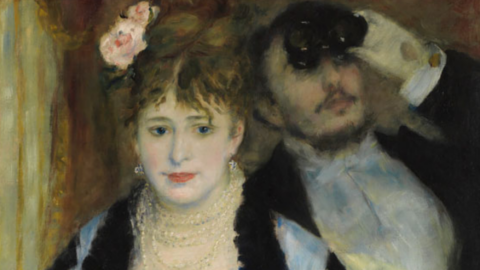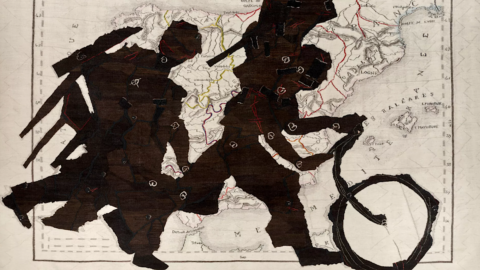Get read on a small screen it is one nice challenge for page designers and graphic designers of the written word and digital communication. here is thecaution spasmodic that It is given to the art of typography, at a time when real printing houses, or rather printing houses, are becoming part of the industrial archeology landscape. But the art of typography is far from dead.
One of the most appreciated aspects of the latest releases of Windows it is really the lettering, readability of characters and the role they play in the overall interface design. Jonathan Ive, from Apple, has reduced to a minimum, almost beyond the perceptual possibilities, the entire interface of iOS to enhance the thin and round characters of theHelvetica New Ultra Light. After an initial disorientation, the minimalist choice can conquer the user and immediately the impulse to always write in Helvetica New Ultra Light. With iOS 9, theHelvetica New has given way to a sister font that was created specifically for i deviceApple, the San Francisco (SF), homage to the matrix city of style and della culture of valley. The form are those ofHelvetica New, only that San Francisco is more ellissoidbut by and moreù thickened of the Ultra Light, previously used.
La revival of typography could not be more striking: i characters from the role of pageboys of the interfaces they have become i absolute monarchs to which yes they enslave the other aspects of the design: such as shapes, color, embellishments and various ornaments.
THEAll Blacks of the characters
Since 50 years a font dominate above all, theHelvetica. Only headstones, Steve Rose tells us on the “Guardian” have remained free from the influence of this typeface which owes a great deal to the “godfather of all fonts”, Mike parker, who passed away in 2014. TheHelvetica It's really ubiquitous: it is practically impossible that in any day you do not enter ours several times field of view. Not only the printed media, the words on the screen, but also the urban landscape would be unrecognizable if with a global substitution we replaced theHelvetica with Garamond.
Rose writes on the "Guardian"
Today theHelvetica it is ubiquitous, it is used for big brands (Nestlé, Lufthansa), for store names (American Apparel), for public signage (è Helvetica the New York subway — and also the Milan one thanks to Bob Noord); is used by technology companies (Microsoft, Intel, Apple Lossless Audio CODEC (ALAC), andHelveticait even appears on the T-shirts displaying the self-defeating and ironic slogan “I hate theHelvetica.
Helvetica, thats enough!
There is, however, also those who begin to show allergies towards theHelvetica. The conformism ofHelvetica He begins to get on my nerves. Here more geometric and less pot-bellied characters like theTo come up used by the most liberal and tonic city of amsterdam for its corporate identity or from with the BBC Two.
Always Rose tells us that the obsession with as well Wes Anderson, a highly sought-after director in filmic language and very attentive to detail, for the Futura (a lucky variant ofHelvetica) has gradually faded away to head towards theArcher boldwhich perhaps with its soft curves finished with grace and the elongated giraffe-neck ascenders reflects the personality of the original director better than the Futura steccoto. Surely Wes is out of the box like theArcher Bold .
Mike Parker: artist, technologist, entrepreneur
But let's go back toHelvetica. As we have seen, its creator is Mike parker, typographer and font builder, passed away at 84 years old in 2014. Parker is another — how to define it? — creative (?) who has made the intersection between art, technology and entrepreneurship his modus operandi. Under the direction of him the Mergenthaler Linotype Company designed and manufactured over a thousand typefaces cge became the market standard. With Parker they collaborated type designers such as Matthew Carter (Verdana, Georgia, Tahoma, Bell Centennial, Miller and galliard), Adrian Frutige (Frutige e To come up, Universe, Linotype Didot), Hermann Tap (Optima, Paltino, Zapfino, Tap Chancery).
In 1981 Parker and Carter founded their own company, Bitstream, for the creation and distribution of modular fonts which, as the company name implies, aimed to meet the needs of users of new pre-printing and above all of the new Desktop Publishing, freeing the use of the font from the target hardware.
Parker is also responsible for the abortive initiative to design layout software, Pages, for the workstation NeXT, the visionary platform created by Steve Jobs after he left Apple in 1986. The acquisition of NeXT in 1996 by Apple, put an end to the project Pages whose technology was acquired by Design Intelligence, in 2000 acquired by Microsoft.
In 2012 Parker was awarded the JACK Typography Award, one of the major awards for typographic art professionals. The motivation for the award reads as follows:
Parker's knowledge, passion, infectious enthusiasm and incredible influence on the art of typography are some of the factors that prompted the jury to unanimously award the 10th JACK Typography Award and Mike Parker.
For our readers we have provided a translate in Italian and adapt the article the British weekly “The Economist”, he dedicated to the American inventor/entrepreneur who had an importance that can hardly be underestimated in the formation of Koine of the last half century.
Happy reading, even if you are not a fan of theHelvetica, like me.
The head in the characters
What is the basis of civilization? Some would say grain, others fire control. Mike Parker would say the typeface. The small brass mold of the XNUMXth century for the character fusion designed to accommodate incandescent lead which, as it cooled, would mold itself to the matrix to create the shape of the character, it had allowed people to read and, thanks to reading, changed their way of thinking and acting.
Jeff Jarvis, director of new media program to New York University, in a ebalso also translated into Italian highlighted the modernity of Gutenberg's vision by calling him the first technology entrepreneur in history.
The Bible printed by John Gutenberg around 1455, with that marvelous finely spaced and finished Gothic writing - still unsurpassed today -, he had broke the cultural monopoly of the church and pioneered modern commerce. What could be more revolutionary than this?
The small print was one of the treasures Mike Parker discovered when, in 1958, he was commissioned to select some typographic art artifacts for the museum Plantin-Moretus of Antwerp. Already fascinated by the subject, with a thesis just discussed at Yale sul character Garamond, he immediately fell in love with this task. From the dusty printing house has brought back to light the unsurpassed Roman typefaces of the sixteenth-century typographer Hendrix of the material moisture meter shows you the Twist; the ancestors of modern newspaper fonts and the Poynter old style; Robert's dancing baroque characters Granjón and in particular the galliard, from which Parker, and his co-designer Matthew Carter, would later derive a more modern version; the condensed yet very legible Roundabout custom created for an antiphonary intended for Philip II of Spain and never published.
At Linotype
Whatever typeface was being talked about, Parker knew its history. In the early days like director of type development at Linotype, where he worked from 1959 to 1981, he went about, with his energetic ed bombastic figure, carrying his catalog of books on his arm characters of plantin — each type was photographed with a light shining obliquely out of the outline of the letters. The designers, he hoped, would watch and be inspired and imitate.
Parker he did not design the characters himself, although he aspired to become an artist. His work was similar to that of the sommelier: he evaluated the spacings, the shape and judged the appearance of the characters and then followed, in every detail, the development and manufacture of the moulds.
This was a topic he could discuss for hours, day or night, in person or on the phone or while devouring a Korean five-vegetable stew he'd grown fond of during his military service. Until he met his first wife, the word "woman" in his life only made sense in the world of typesetting.
A font for all seasons
His job at Linotype was also to build a proper one library of fonts to sell to printers. He expanded the range of characters available from 150 to 1500, cloning and adapting existing fonts when necessary. This industry was evolving since the different foundries and printing companies began to compete strongly to acquire new customers and professionals in the sector.
In this new competitive environment, a combative and outgoing character like Parker's moved quite well: for example, he took the designer away from the competition Matthew Carter to make him its chief designer. He even went so far as to accuse the competition of the Times New Roman, asserting that the original drawings of starling Burgess, dating back to the 20s, had been stolen from him. In 2009 he launched a font called starling, based on those very drawings, just to put things back in their place: it was the Original Times New Roman, but better.
Here is theHelvetica
Of the more than 1000 fonts he developed, his greatest success was theHelvetica. It was he a perfect it e shape it according to the needs of the stiff, booming Linotype machines that made up everything printed in the United States at the time. L'Helvetica was the birth of the Swiss designer, Max Miedinger, who invented it in 1956.
Unlike the exuberant elegance of XNUMXth century typefaces, theHelvetica was simple, strictly horizontal, with clear forms and highly readable. It became, in Parker's hands, the public nature of the modern world: the New York subway, the tax return form, the logo of McDonald's, Microsoft, Apple, Lufthansa and countless others. It was also, for his clarity, default font on Macs and so it was transported smoothly into the era of digital typography.
Not everyone liked it. Parker didn't always like him either: when he drove around Brooklyn or Boston in his car with the music blaring, he often got angry about the violence suffered by his Helvetica in shop windows or on truck bodies, where the endings were rounded and the spacing incorrect. But far from seeing theHelvetica as a neutral, simple or anonymous character, she loved him for the relationship between figure and background, for its stability, for its representation of a "strong matrix of surrounding space". This gave a flavor to the words: and theHelvetica it was a character that it gives people confidence to navigate through rapidly changing times.
At Bitstream and the relationship with Steve Jobs
Parker bets, without too much success, on the new revolutionrio operating system created by Steve Jobs after leaving Apple. Next step, in fact, incorporated the Display Postscript so as to display the characters in vector format on the screen and not as a map of points. In this world, typeface on the screen equaled the perfection of that in print.
He too rode the times quite nimbly, leaving Linotype in 1981 with Carter for to found la bit stream, a company that specializes in producing digital typefaces for licensing to anyone. A partnership with never took place Steve Jobs and in 1995 he had to abandon the project of Pages su NeXT (a newly developed layout software); nevertheless he was impressed by the possibilities of typography in the digital age in which entire pages could be composed at the touch of a button and thousands of fonts browsed and used by a person sitting at a desk.
In the last years of his life, like history of typography at the Font Bureau, he liked to claim that typesetting moved at a turtle's pace between Gutenberg and the XNUMXth-century Linotype machine. But—cue for a wide, beaming smile—Parker had been lucky enough to live and work in the latter half of the XNUMXth century, an era of very fast revolutions generated, again, from typefaces.
Read also: Mike Parker, life Dedicated to typography






mike parker didn't invent Helvetica. Helvetica was created by Eduard Hoffmann and Max Miedinger.